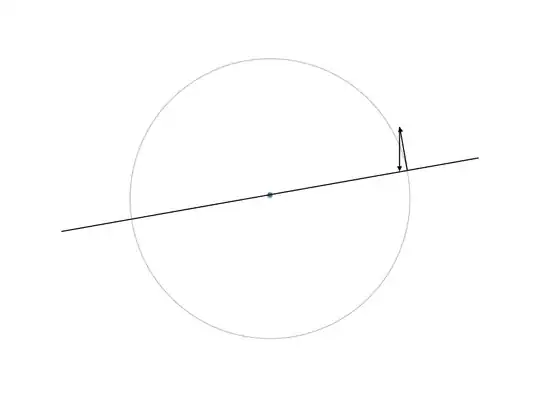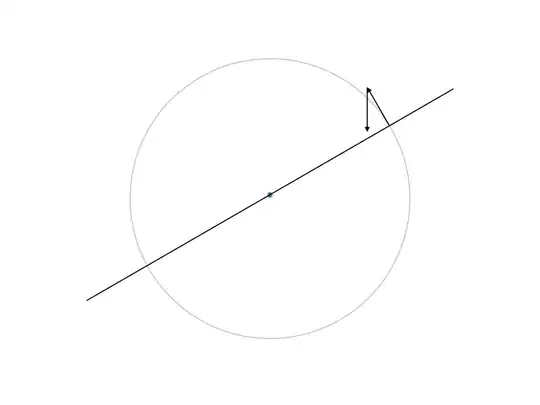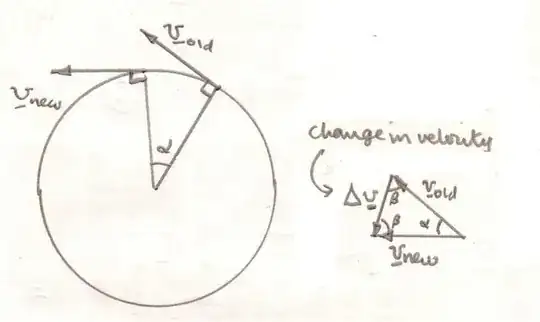I was trying to make an image to show students how to get the direction of the centripetal acceleration from looking at the change in the velocity vectors in uniform circular motion.
However, what I discovered was that it only works if the difference in the velocity vectors are small.
Take image 1: one vector is the negative of the tangent vector at $\theta=0$ degrees, and the other at $\theta = 10$ degrees.
In this case, taking the difference between the vectors gives you a vector that points towards the circle centre.
However, in image 2: the second vector is at an angle $\theta = 30$ degrees, and you can see that when you line the vectors up and take the difference it does not point to the centre of the circle.
In both cases the size of the arrows are identical.
Why is this?
I noticed that several books/web resources show this example using vectors with large angle differences, and I can never get the difference to point towards the centre in these cases.
Am I doing something wrong or is something more subtle happening here?
My current thinking is that it's purely due to the fact that the acceleration is the derivative of the velocity with respect to time, and therefore requires infinitesimal changes in the velocity and time in order to be correct.


